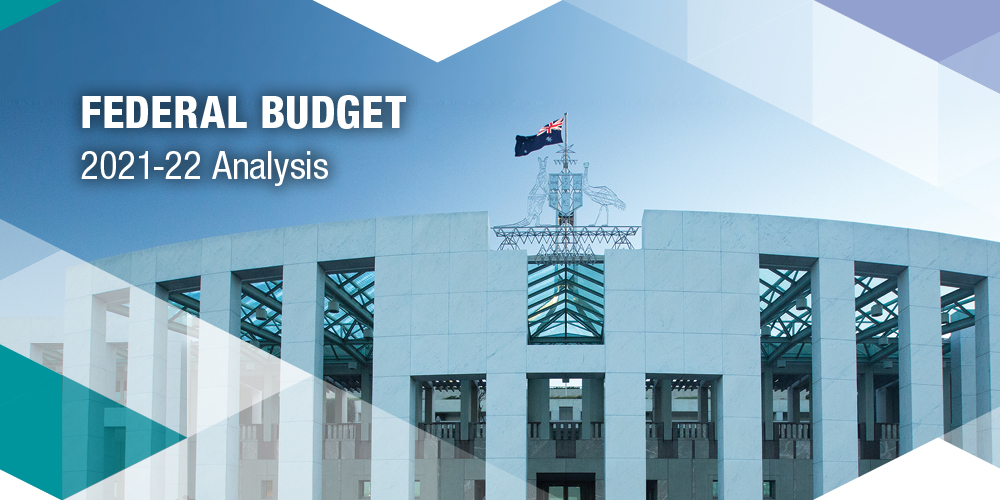
Investing in recovery In his third and possibly last Budget before the next federal election,…

Investing in recovery In his third and possibly last Budget before the next federal election,…

If you’ve recently split from your partner or are simply wondering what might happen if you do, you’ll need to keep your financial wits about you. A division of assets and debts, whether they’re held separately or together, may be on the cards.
Here are some of the things to be aware of when it comes to de facto splits and your finances.
A de facto relationship, according to Australian family law, is where two people of the same or opposite sex live together on a genuine domestic basis as a couple. You can’t be married to each other or related by family.
Not all de facto couples have to divide property of the relationship (that’s your assets and debts) when they break up. However, depending on your situation, this may be the case and can be formalised between the two of you without any court involvement.
If you can’t agree though, you can apply to a court for financial orders regarding the division of property and possibly superannuation, while spouse maintenance might also be payable in some circumstances.
This must be done within two years of you splitting from your former partner, otherwise, you’ll need special court approval to make an application.
The family law courts can order a division of any property you and your de facto own (regardless of whether you own it together or separately) if they’re satisfied of one of the following:
Property includes all assets and debts held in joint or separate names and may include things you acquired before or even after the relationship ends. This could include things like:
Under superannuation splitting laws, if you separate, it’s possible you’ll get some of your ex-partner’s super or that they’ll get some of yours.
However, because super is held in a trust and differs from other types of property, there are rules around when these assets can be accessed.
What this means is, splitting super doesn’t necessarily convert it into cash as it’s still subject to certain rules, which may mean that you mightn’t be able to access the money for a long time.
Seek financial advice to help you understand the long-term outcomes of different settlement options. Please reach out to the Sherlock Wealth team to discuss your unique situation here
Source: AMP

Treasury chief Steven Kennedy believes few countries have experienced what Australia has achieved in responding to last year’s recession – relatively good health outcomes, smaller economic impacts and now, rapid recovery.
“By any measure, Australian governments have struck the right balance,” Dr Kennedy told senators in Canberra.
“Our outcomes have been world leading, both in the health and the economic sphere.”
He said the economy has now recovered 85 per cent of the decline from its pre-COVID level of output.
“Growth will now begin to moderate as we move past the initial phase of the recovery,” he told a Senate estimates hearing on Wednesday.
“While the economy is recovering strongly, well supported by fiscal and monetary policy settings, we are well below our pre-pandemic economic growth path and it will take some time to fully recover.”
He said the peak in unemployment now appears to have passed following strong employment gains in recent months.
In the mid-year budget review released in December, Treasury had predicted the unemployment peaking at 7.5 per cent in the March quarter.
Instead, the unemployment rate has steadily fallen, dropping to 5.8 per cent in February.
“Nonetheless, while outcomes to date have tended to surprise on the upside, there is still significant spare capacity in the labour market,” Dr Kennedy said.
New figures show there remains strong demand to hire staff with job advertisements posted on the internet jumping by a further seven per cent in February to be 24.8 per cent over the year.
This is the 10th straight month job ads, as compiled by the National Skills Commission, have risen after striking a record low in April 2020 and the depths of last year’s recession.
Job ads grew in all eight broad occupational groups monitored by the commission and recruitment activity increased across all states and territories.
But Dr Kennedy expects the number of people defined as being in long-term unemployment – those who have been looking for but been without, paid work for a year or more – will jump in coming months.
“This reflects the flow-on impacts of the spike in unemployment at the onset of the crisis in March and April last year,” he said.
Meanwhile, Australia recorded its third consecutive goods trade surplus above $8 billion for the first time in history.
Preliminary trade figures show exports grew by two per cent in February, buoyed by a record $1.3 billion of cereals exports, which helped offset a 12 per cent decline in iron ore shipments to China.
Imports also grew by two per cent, led by a 24 per cent increase in road vehicle inbound shipments.
Colin Brinsden, AAP Economics and Business Correspondent
(Australian Associated Press)

Income protection can be the financial safety net you need if you experience an accident or illness that means you can no longer work. A common misconception about income protection insurance is that it’s only for high-income earners, but this isn’t the case.
Income protection insurance is a source of income paid out to you if you are temporarily unable to work due to an illness or injury.
Nobody wants to consider an accident or illness impacting their health suddenly, but it’s always a possibility. As well as changing your lifestyle, an unexpected illness could mean you need to take an extended leave from work. In a 2020 report by the Australian Institute of Health and Welfare (AIHW) on an average day, 100 Australians suffer from a stroke that could leave them permanently out of work. The AIHW also reports that accidental falls were the most common cause of injury deaths. It’s tempting to think that if you lead a healthy lifestyle and make smart choices, you’ll be fine. But the reality is you can’t predict the future, you can only plan for it.
Then there’s the trap of thinking life insurance is all you need. An unexpected death is absolutely a part of life we should all plan for. But an unforeseen total or partial disability due to injury or illness is a debilitating situation that can stop you from earning a living and is equally unwise to overlook.
Most super funds offer income protection insurance for their members which can be a cheaper option. But cheaper premiums can come with a limited level of cover. Moneysmart by the Australian Securities & Investments Commission notes that “insurance premiums through super are deducted from your super balance which reduces your savings for retirement” so it’s important to consider if separate income protection cover is right for you and your family’s needs. For more information on whether life insurance through superannuation is enough, read here.
So, how does income protection insurance cover you? Up to 75% of your monthly income is provided for a nominated period to help keep your household up and running and provide for your loved ones while you recover. In a nutshell, it gives you the freedom to rest easy knowing you’ll be taken care of financially.
An inability to keep up with the mortgage, loan or credit card repayments can cause considerable stress when you’re unwell. It’s crucial to focus on recuperation at such a time, with full confidence that these debts can be provided for under your policy.
Your income is fundamental to achieving your financial goals, so for financial security, you should be confident that you have adequate protection and plans in place. To discuss your financial plan, or to take out cover to protect you and your loved ones if something unexpected did occur, please reach out to the Sherlock Wealth team to discuss your unique situation here
Any advice is general in nature only and has been prepared without considering your needs, objectives or financial situation. Before acting on it you should consider its appropriateness for you, having regard to those factors.

How much do you need to save to make sure you have enough to last throughout retirement? It very much depends on what your living costs will be after leaving work. Find out more about how to budget for the retirement income you’ll need for the lifestyle you’re planning for.
When you plan to retire will often be determined by whether you can afford to stop working and still have enough income to maintain your lifestyle. Figures from the Australian Bureau of Statistics[1] show the majority of men (36%) and women (22%) chose to retire at the time when they became eligible to draw on their superannuation and/or the age pension. And their average age at retirement was 63.5 years.
If you’re planning to delay retirement until your super balance reaches an amount you can comfortably live on, just how do you determine what that target should be? There are a number of factors that will affect how far your money will go, including your life expectancy, how your money is invested and other choices you make for managing your income. But one of the most important steps to planning for a secure financial future in retirement is to be realistic about your living costs.
How your living costs might change
As you stop working and have more time to yourself, your routine will change and you might save on some costs as a result. Spending on transport could fall as you no longer have to commute. If buying lunch and takeaway coffees have been a daily habit while working, you could also make significant savings by leaving these out of your retirement routine. Other living expenses, such as buying groceries and clothes and paying household bills are likely to be much the same before and after retirement.
Thinking about how you’ll spend time in retirement and where you’re planning to live will also give you clues about how your spending might go up or down. If a few trips overseas are on the cards, you’ll need to allow for these occasional costs in your overall budget. But if you’re planning to limit travel to domestic holidays only, then you won’t need to allow for these expenses in your financial plan.
Start with a ballpark estimate
How much travel you plan to be doing is just one of the many daily and one-off costs taken into account in the Retirement Standard estimates for annual expenses. Updated every quarter by the Association of Superannuation Funds of Australia (ASFA), these figures can give you a rough idea of what you can expect to be spending day-to-day in retirement.
There are two estimates available, a higher one for a comfortable lifestyle and a lower amount for a modest lifestyle. As at December 2018, the amount you’d spend as a single person aged around 65 years enjoying a comfortable lifestyle is $43,317 and for a modest lifestyle, the annual budget is $27,648. The estimate for couples is $60,977 and $39,775 for comfortable and modest lifestyles respectively.
To give you an idea of how differences between a modest and comfortable budget might impact on your retirement plans, the annual travel budget is a good place to start. A couple living modestly can expect to spend approximately $2,500, with no allowance for overseas trips. On a comfortable budget, a couple can splash out more than $5,000 each year on travel, with roughly a third going towards international travel.
The cost of lifestyle changes
Although it’s wise to build a budget based on what you expect to be doing in early retirement, your overall plan should also take into account the potential for lifestyle changes as you age. Travelling for longer periods, dining out and entertainment and taking part in sports and hobbies could taper off as you grow older. Health and aged care costs, on the other hand, could make up a larger share of your budget in the later years of retirement.
A plan to see you through retirement
Your expenses are just one side of the whole budget planning process. Taking a good look at all your retirement income options is just as important to figure out how much you’ll need and when you’ll be ready to take that step. From the age pension to the equity in your home to retirement income products such as annuities and account-based pensions, there are all sorts of ways to support yourself financially towards having the lifestyle you want.
The Sherlock Wealth Team can support you in exploring these opportunities to manage your income for your whole retirement so you can make better choices for a secure financial future. Reach out to the Sherlock Wealth team to discuss your unique situation here
Source: Money and Life
(Financial Planning Association of Australia)

In this episode, Scott Charlton from Slipstream Coaching talks with Jacqui Sherlock of Sherlock Wealth and Irma Bantjes of Stratus Financial Group about leadership in professional service firms.

The government is taking action to make Australia’s superannuation system more transparent but individuals still need to take
ownership of their super and think about how the changes impact them. Super is not the set and forget savings scheme many
think it is.
Here are some of the latest changes to be aware of.
It’s not 100% official but the Government is expected to lift the Superannuation Guarantee (SG), the proportion of money
employers are required to divert to employees’ super, from 9.5% to 10.0% on 1 July 2021. The SG has been frozen at 9.5% since
2014 – lifting the rate is aimed at channelling more savings into super, which is one of the three key pillars of retirement savings.
Happy with your existing super account? Instead of being diverted into a new employer’s default super fund, as of 1 July 2021,
workers will automatically retain their super account unless they notify their employer otherwise. This change gives people a
greater voice in their choice of super account and will reduce the number of super accounts people have, which will help minimise
fees and grow balances. It’s known as ‘stapling’ and means that your super account moves with you as you change jobs.
Employers will need to take these steps when hiring a new employee:
There is a greater requirement for transparency under the latest super reforms. Super fund administrators will need to
communicate why investment decisions have been made and how these were done with the best interests of members in mind.
Fund performance will be monitored through an annual performance test and the results will be publicly available. Funds that
fail two tests will be closed to new members. Testing will begin with MySuper products in July 2021 and rolled out to all super
products from July 2022. In this context, it pays to be on top of your fund’s performance
If you need help deciding what’s right for your super, reach out to the Sherlock Wealth team to discuss your unique situation here
This information is current as at February 2021. This article is intended to provide general information only and has been prepared without taking into account any
particular person’s objectives, financial situation or needs (‘circumstances’). Before acting on such information, you should consider its appropriateness, taking
into account your circumstances and obtain your own independent financial, legal or tax advice.

At a time when many people have been focused on their family’s health and livelihood, having adequate life insurance has never been more important. Yet the gap between what we need and what we have has been growing.
Life insurance is all about ensuring your family can maintain their lifestyle if you were to die or become seriously ill. Even people who do have some level of protection might discover a significant shortfall if they had to depend on their current life insurance policies.
That’s because 70 per cent of Australians who have life insurance hold relatively low default levels of cover through superannuation.
The most common types of default life insurance cover in super are:
If you have basic default cover and are part of what is considered an “average” household with no children, then it’s likely you only have enough to meet about 65-70 per cent of your total needs. The figure is much lower for families with children. Indeed, a recent study by Rice Warner estimates that while current levels of insurance cover 92 per cent of death needs, they only account for a paltry 29 per cent of TPD needs.i
Such a shortfall means that you and/or your family would not be able to maintain your current lifestyle.
The Rice Warner study found the amount people actually insured for death cover has fallen 17 per cent and 19 per cent for TPD in the two years from June 2018 to June 2020. This was driven by a drop in group insurance within super which has fallen 27 per cent for death cover and 29 per cent for TPD cover.
This was largely a result of the introduction of the Protecting Your Super legislation. If you are young or your super account is inactive then you may no longer have insurance cover automatically included in your super. You’ll now need to advise your fund should you require cover.
It may make sense not to have high levels of cover, or even insurance at all, when you are young with no dependents and few liabilities – no mortgage, no debt and maybe few commitments. But if you work in a high-risk occupation such as the mining or construction industries, or have dependents, then having no cover could prove costly.
Another reason for the fall in life insurance cover has been the advent of COVID-19. With many people looking for cost-cutting measures to help them through tough times, insurance is sometimes viewed as dispensable. But this could be false economy as this may be exactly the time when you need cover the most.
There is also the belief that life insurance is expensive which is certainly not the case should you ever need to make a claim.ii
It is estimated that an average 30-year-old needs $561,000 in death cover and $874,000 in TPD cover. As you and your family get older, your insurance needs diminish but they are still substantial. So a 50-year-old needs approximately $207,000 in death cover and $499,000 in TPD.
These figures are just for basic cover so may not meet your personal lifestyle. When working out an appropriate level of cover, you need to consider your mortgage, your utility bills, the children’s education, your daily living expenses, your car and your general lifestyle.
It’s also important to consider your stage of life. Clearly, the impact of lost income through death or incapacity is much greater when your mortgage is still high, your children are younger, and you haven’t had time to build up savings.
While having some life insurance may be better than nothing, having sufficient cover is the only way to fully protect your family. So why not call us to find out if your current life and TPD cover is enough for you and your family to continue to enjoy your standard of living come what may?
Now more than ever, in these uncertain times, you may find that you too are significantly underinsured and need to make changes. Are you ready to review your insurance needs? Reach out to the Sherlock Wealth team to discuss your unique situation here
i https://www.ricewarner.com/new-research-shows-a-larger-underinsurance-gap/
(All figures in this article are sourced from this Rice Warner report.)

Aussies may have a natural reserve when it comes to talking money. But as parents, teaching our kids to be financially aware and responsible takes more than a few quick lessons about money and the opportunities and pitfalls it can create.
Teaching opportunities will come and go as our children grow. If you’re a relaxed sort of money parent, then maybe you’re happy to freestyle and just take these chances as they come. But if you’re keen to create teaching moments by design, it can help to know what other people do and when are the best windows in your child’s development to introduce new financial concepts.
In 2018, 1000 Australian parents were surveyed about how they teach their kids about money for the Share the Dream report. Results show that half of parents are talking to their kids regularly about money and almost three-quarters of kids (72%) are getting pocket money, an important tool for teaching kids about saving and spending money. The age group most likely to be getting pocket money are 9-13-year-olds (80%) and if you’re aged 4-8 years you’re less likely to receive any (65%).
But according to a Cambridge University research study from 2013, parents could be missing a trick if they’re waiting until kids turn nine to start pocket money. Their findings suggest that by the age of seven, kids have already acquired the mindsets that will direct their money habits in adulthood. Not only that, but they’re also capable of grasping the fundamentals of how money works at this age. They understand that money can be exchanged for goods and that you need to earn it first.
Dr David Whitebread, the co-author of the study, encourages parents and educators to get on the front foot when it comes to helping kids learn good money habits early on. “The ‘habits of mind’ which influence the ways children approach complex problems and decisions, including financial ones, are largely determined in the first few years of life,” says Dr Whitebread. “Early experiences provided by parents, caregivers and teachers which support children in learning how to plan ahead, in being reflective in their thinking and in being able to regulate their emotions can make a huge difference in promoting beneficial financial behaviour.”
As well as starting money lessons early, stats from the Share the Dream report also suggest that money talk from parents needs to be covering more ground. Many parents are definitely covering off the basics, with the majority of parents (52%) having talked with kids about spending and saving in the last six months. On the other hand, talking about cashless payments with kids is far less common. Only 19% of parents have spoken about online transactions in the same period, and the numbers discussing in-app purchases (13%) and Afterpay (5%) are smaller still.
The study also shows that there may be advantages to being more forthcoming about ‘invisible’ money transactions with our kids. Across all age groups 38% of parents are reporting that their kids have a preference for online purchases. For the teenagers in the 14-18 group, this figure rises to nearly half (47%). If kids are to be prepared for their online shopping experiences, it makes sense to be having these discussions as they begin to transact online.
Talking money with our kids can make us feel uncomfortable and this is a trend that was also revealed in the Share the Dream survey. 68% of parents sometimes feel reluctant to talk about money with their children and in the majority of cases (32%), it’s because they don’t want their kids to worry about it. And 19% of parents say they don’t feel good enough about their own financial situation to discuss it as a family.
While financial stresses can be very real to you, there may be a way for you to help your kids learn from your own ups and downs with money without causing them concern. In fact, the ‘Engager’ parent profile identified in our survey shows that having more family discussions about money can lead to their kids being more curious, confident and financially literate. Engagers are least reluctant to talk to their kids about money and it seems their honest approach is leading to more positive habits among their children, 56% of whom are likely to have a job, compared with the survey average of 44%.
Source: Money and Life.

Recent studies show that more than two in five Australians lack confidence when it comes to financial decision making.
The Federal Government believes this is largely due to a lack of financial literacy within the community, which is why it has developed the National Financial Literacy strategy. This initiative aims to motivate Australians of all ages, genders and socioeconomic backgrounds to engage more with their finances. In turn, this will help people make informed financial decisions that will improve their economic wellbeing.
As social norms and family structures have changed, financial decision-making is no longer the sole domain of the male breadwinner – these days it’s just as important for women to take charge. Yet women experience higher levels of stress when it comes to managing money, with more than a third saying they find it overwhelming.
That’s why it’s vital for women to build their financial literacy. Becoming more financially savvy can change a woman’s life, by empowering her to be self-sufficient and make confident decisions that will improve her financial situation. Currently, only 10% of Australian women retire with enough savings to fund a comfortable lifestyle – so by arming women with strategies to help close the ‘super gap’ at each life stage, they may become less reliant on social services in retirement.
The financial decisions women make throughout their lives can impact their financial position in later years. With this in mind, here are some things you can do to take control at each stage of your life journey.
Generally speaking, the gender pay gap puts women on the back foot as soon as they enter the workforce. Although there may be greater equality between the sexes than ever before, women’s average salaries are still 17.3% lower than those of men doing the same job.
This highlights how important it is for women to be able to budget if they want to build their savings and get ahead.
Women are still more likely than men to take time out of the workforce to raise kids, which means they receive less in employer super contributions during their careers. This leads to a significant super gap – men have an average super balance of $292,500 when they retire compared to $138,150 for women.
That’s why you need to prepare carefully for your career breaks, and top up your super either before or after to make up any shortfalls. The Government’s Parental Leave Calculator and Career Break Super Calculator make it easier to plan your finances around having a family. Visit https://www.moneysmart.gov.au/tools-and-resources to access these calculators.
If you’re like most women, the largest debt you’ll ever have to pay off is your home loan. Before taking the plunge into homeownership, a Mortgage Calculator can show you how much you can afford to borrow, so you can work out a repayment plan that fits your budget. And if you’re prone to splurging on your credit card, a Credit Card Calculator could help stop your debts from spiralling out of control. Visit https://www.moneysmart.gov.au/tools-and-resources to access these calculators.
With lower confidence levels and a smaller appetite for risk in their investments, women are less likely than men to choose high-growth investments like shares. This also means they miss out on potentially higher returns. But as women generally retire earlier and live longer than men, they can expect to spend more time in retirement – which makes it even more important for them to have enough money to last the distance. As the first step, make sure your investment mix matches your life stage. That way your super and other investments will have the best chance of growing over time.
Because women face so many distinct challenges, they need customised solutions – which is where a licensed financial adviser comes in. If there’s ever an aspect of your finances that you’re unclear about, reach out to the Sherlock Wealth team to discuss your unique situation here. We can explain it in a way that makes sense to you, so you can make wiser financial decisions.
Source: AMP News & Insights.